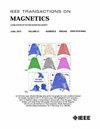Numerical Simulation and Performance Analysis of Magnetorheological Dampers Using BPP and HBP Models With Particle Swarm Optimization
IF 2.1
3区 工程技术
Q3 ENGINEERING, ELECTRICAL & ELECTRONIC
引用次数: 0
Abstract
To improve the accuracy of expressing the rheological characteristics of magnetorheological fluids (MRFs) using traditional constitutive models, rheological tests were performed with an MCR302 rheometer under varying magnetic fields. Parameters for both the Bingham-plastic-Papanastasiou (BPP) and Herschel-Bulkley–Papanastasiou (HBP) models were identified using particle swarm optimization (PSO). A simulation model was then developed to numerically simulate the dynamic behavior of magnetorheological (MR) dampers. Following this, a physical damper was designed, fabricated, and tested on a damping force platform. Comparisons between experimental and simulation data revealed that the HBP model more accurately captures the rheological properties of the MRF. While both models predict flow velocity effectively, the HBP model yields damper dynamic characteristic predictions that align more closely with experimental observations, particularly in terms of damping force. These findings underscore the HBP M基于粒子群优化的BPP和HBP模型的磁流变阻尼器数值模拟与性能分析
为了提高用传统本构模型表达磁流变液流变特性的准确性,利用MCR302流变仪在不同磁场下进行了流变试验。采用粒子群优化(PSO)对bingham - plasticity - papanastasiou (BPP)和Herschel-Bulkley-Papanastasiou (HBP)模型进行参数辨识。建立了磁流变阻尼器的仿真模型,对磁流变阻尼器的动态特性进行了数值模拟。随后,设计、制作了物理阻尼器,并在阻尼力平台上进行了测试。实验数据和仿真数据的对比表明,HBP模型更准确地反映了磁流变材料的流变特性。虽然两种模型都能有效地预测流速,但HBP模型的阻尼器动态特性预测与实验观察结果更加接近,尤其是在阻尼力方面。这些发现强调了HBP模型在mrf建模中的高精度和实用性,为振动控制应用中本构模型的选择提供了有价值的见解。
本文章由计算机程序翻译,如有差异,请以英文原文为准。
求助全文
约1分钟内获得全文
求助全文
来源期刊

IEEE Transactions on Magnetics
工程技术-工程:电子与电气
CiteScore
4.00
自引率
14.30%
发文量
565
审稿时长
4.1 months
期刊介绍:
Science and technology related to the basic physics and engineering of magnetism, magnetic materials, applied magnetics, magnetic devices, and magnetic data storage. The IEEE Transactions on Magnetics publishes scholarly articles of archival value as well as tutorial expositions and critical reviews of classical subjects and topics of current interest.
 求助内容:
求助内容: 应助结果提醒方式:
应助结果提醒方式:


